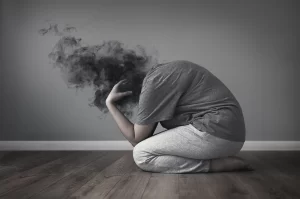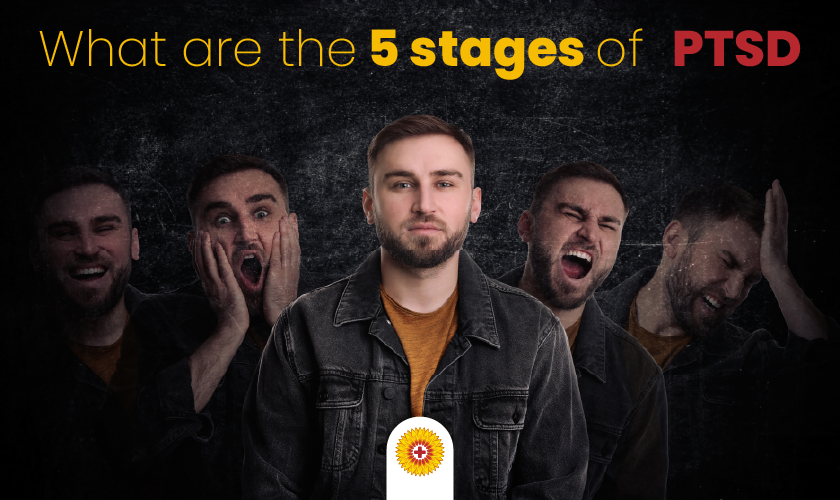Our lives can bring good and bad times. Memories of happy times are pleasant to recall.
However, some things that happen can be intensely traumatic and hard to forget.
When something frightening happens, like experiencing violence, it can cause Post-Traumatic Stress Disorder or PTSD.
When you have PTSD, the bad memory keeps coming back into your mind without you wanting it to.
If you or someone you love has PTSD symptoms like trouble sleeping, anger, or difficulty concentrating, get help.
Urgent Care of Kansas can assist with PTSD and other mental health issues.
Our professional experts will check your health and make the best treatment plan. The treatment includes medicine, talking about feelings, and learning relaxation techniques.
Statics About Post-Traumatic Stress Disorder (PTSD) Per Year
According to Australasian Psychiatry, more than 1.15 million Australians.
It equals approximately 4.4% of the population. Such people experience Post-Traumatic Stress Disorder (PTSD) annually.
Furthermore, the publication predicted that PTSD prevalence is forecasted to increase to levels higher than what has ever been documented before.
In 2019-2022, the highest rate of PTSD was 83%, which is the ear where COVID-19 spread all around the world.
Hence, these are the rates that are increasing annually, and the percentage is also increasing in the people dealing with trauma and depression.
PTSD can be treated through guidance from a mental health expert. Therefore, don’t think twice, and feel free to contact us!
PTSD Symptoms and Signs
Some common symptoms and signs of PTSD:
- Feared events or flashbacks.
- Try to avoid the events and situations that trigger the PTSD.
- Overthinking and evil thoughts.
- Emotions, feelings, and laziness.
- Feeling detached or long distanced from family and friends.
- The feeling of danger, and you keep yourself alarmed.
- Difficulty in feeling relaxed and calm.
What are the 5 stages of PTSD?

Mental health can be hard to understand. There are different parts to it. In general, illnesses get better or worse over time. There are stages to them. Additionally, specific disorders like PTSD have their own set of stages too. Getting better is also a step. When someone gets treatment, there are stages to feeling better. It doesn’t happen all at once. At first, there may be lots of symptoms that are hard to deal with. With help, symptoms start going away bit by bit. Next comes maintaining and keeping symptoms away most of the time. Consequently, PTSD, like many other things, follows a set of steps. Most people say there are five stages, but some think there could be less or more.
These stages are the impact stage, denial stage, repetitive stage, short-term recovery stage, and long-term recovery stage.
-
The Impact Stage
This situation of PTSD is the effect stage, which occurs right after the trauma or feared event.
Moreover, it is the stage where a normal person starts understanding the impacts of PTSD.
It is the state when the people start overthinking and emerge the negative thoughts in the mind.
In this regard, seeking some expert and professional assistance is important.
It is important to remember that with time, the most chronic and adverse impacts start happening with the person facing PTSD.
-
The Denial Stage
The “deny” part of PTSD means not wanting to think about what happened. It’s more than just saying “no.”
During this time, people try hard not to feel anything from the bad memory. They don’t want to feel how it made them feel.
Getting help now is important. If you bury your feelings instead of talking, bigger problems can arise later.
Feelings you don’t say out loud tend to come back even stronger.
Counselors can help when the memory is still new.
Talking about what happened and how it made you feel is better than pretending it didn’t bother you.
Keeping it all inside means it will be harder to deal with someday.
Talking to someone soon, not avoiding it, helps stop bigger issues later.
Counseling now keeps the problems from getting worse over time.
-
The Repetitive Stage
This stage is also called the “help stage.” It’s when some getting better can start.
During the relive stage, the person may go back to where the scary thing happened.
They keep thinking about it or seeing it in their mind again.
Moreover, getting a counselor now helps a lot. They can go through these feelings with someone to support them.
When feelings are too hard, the counselor can help them.
At this time, bad memories or places may come back. Talking to a counselor lets them go through it with guidance.
When memories upset them, counselors know how to help them feel better.
Hence, getting help in the relive stage lets the big feelings come out safely.
A counselor will listen without being mad and give comfort when emotions are too strong. This is the stage where recovery can begin with proper help.
-
The Short-Term Recovery Stage of Post-Traumatic Stress Disorder
This is one of the getting better phases of PTSD. Now, the person wants help for real.
A plan can be made to start feeling better. It helps them cope with the bad memories and makes them hurt less.
Making the plan just right for them is important. What works for one may not work for another.
In this phase, they take help. A plan made for them can be created. This plan helps deal with their scary memory in a good way.
-
The Long-Term Recovery Stage
The last step is a long recovery. It doesn’t mean the person isn’t scared anymore.
Now, the first help is finished. They can deal with big feelings from the scary memory.
This step is important because it’s how people with PTSD keep living. But it doesn’t mean they only think about feeling better.
Subsequently, it means they learned ways to live and handle PTSD without much thought. They have things that help them get through each day while keeping PTSD calm.
How Long Does It Take to Heal From PTSD?
How long it takes to feel better from PTSD can be different for each person. It depends on how bad their scary experience was and if they get help.
Most people feel better within 6 to 12 months of talk therapy.
However, setbacks can happen with big life changes that take longer to recover.
After time goes by without symptoms for six months to over a year without help.
PTSD is said to be “in remission,” which means some feelings could come back if reminded of the scary event later on.
PTSD Treatment Options with Urgent Care of Kansas
The treatment options at the urgent care are;
- Primary care for the patient.
- Behavioral therapy.
- Psychotherapy.
Let’s Recap
For someone experiencing PTSD, the traumatic memories and flashbacks can be incredibly distressing. Reliving the event over and over causes great mental and emotional suffering.
There are typically 5 stages of PTSD that the person goes through.
Hence, facing these stages untreated can worsen PTSD symptoms over time.
The traumatic memories feel inescapable and start disrupting the person’s life.
At this point, the person must seek help from mental health professionals.
Urgent Care of Kansas offers specialized PTSD treatment and counseling that can help.
FAQs
Is complex PTSD a disability?
Complex PTSD can indeed qualify as a disability, as the severe and prolonged symptoms substantially limit one or more major life activities like working, sleeping, or concentrating.
How does PTSD change a person?
PTSD can change a person by causing:
- Intrusive thoughts and flashbacks of the trauma.
- Avoiding reminders of what happened.
- Arousal, irritability, and difficulty sleeping.
- Emotional numbness and negative mood changes.
- Instability in relationships, anxiety, and depression.
Can you have PTSD without flashbacks?
It’s possible to have PTSD even if you don’t see the scary memory again. Not everyone sees the past in their head.
Will PTSD ever go away?
For many people, PTSD symptoms can lessen or disappear over time with treatment. However, PTSD may never fully go away for some people.
How does PTSD affect a person?
PTSD can greatly impact someone’s life by causing feelings of fear, anxiety, and depression. It may disrupt daily activities, work, school, and relationships.



No comment